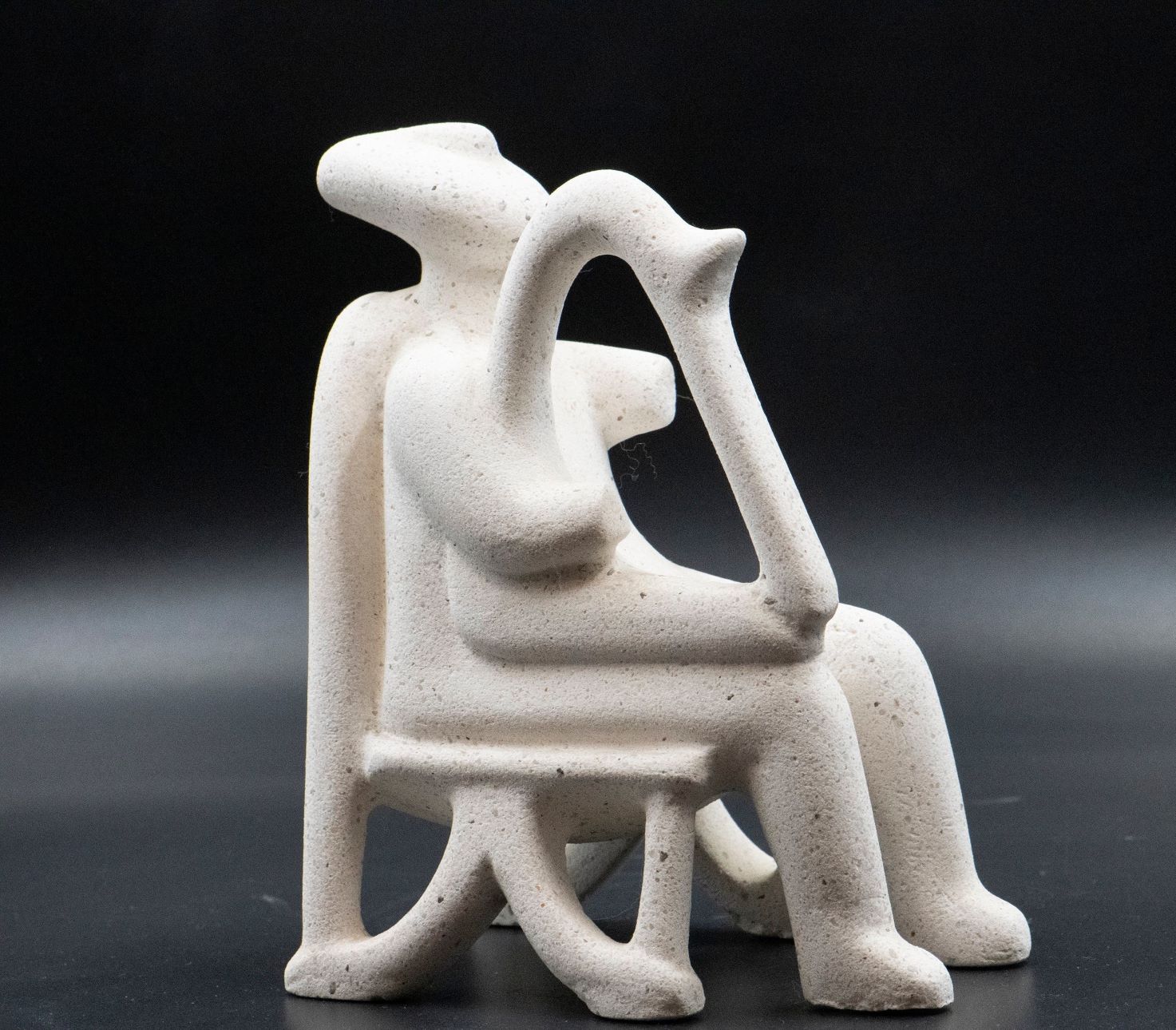Home>Instruments>Piano>How To Fake Being Good At Piano


Piano
How To Fake Being Good At Piano
Published: February 9, 2024
Learn how to impress with your piano skills using these expert tips and tricks. Discover the secrets to faking it till you make it in the world of piano playing. Master the art of appearing good at piano effortlessly.
(Many of the links in this article redirect to a specific reviewed product. Your purchase of these products through affiliate links helps to generate commission for AudioLover.com, at no extra cost. Learn more)
Table of Contents
Introduction
Introduction
Learning to play the piano is a fulfilling and enriching endeavor that allows individuals to express their creativity and emotions through music. While mastering this instrument requires dedication and practice, there are strategies to make it appear as though you are proficient at playing the piano, even if you are a beginner. By understanding the fundamental techniques and incorporating them into your practice routine, you can impress your audience with your "piano skills."
In this guide, we will explore various tips and techniques to help you fake being good at the piano. From selecting the right pieces to understanding hand coordination and adding expression to your playing, these strategies will enable you to create a convincing performance that showcases your "piano prowess." Whether you are performing for an audience or simply looking to impress your friends and family, these tips will help you exude confidence and skill at the piano, even if you are still in the early stages of your musical journey.
So, let's dive into the world of piano playing and discover how you can convincingly fake being good at the piano, while also honing your skills and building a strong foundation for future growth. Whether you aspire to entertain others or simply enjoy the personal satisfaction of creating beautiful music, these techniques will set you on the path to success in your musical endeavors.
Choosing the Right Pieces
When aiming to fake proficiency at the piano, selecting the right pieces is crucial. Opt for compositions that are well-known and have simple melodies, as these are often familiar to listeners and can create the impression of advanced skill. Pieces such as Ludwig van Beethoven’s "Für Elise" or Frédéric Chopin’s "Prelude in E Minor" are popular choices that can captivate audiences without requiring advanced technical abilities.
Additionally, consider choosing pieces that align with your current skill level. By selecting music that is slightly challenging but within your grasp, you can effectively showcase your abilities while minimizing the risk of mistakes that may reveal your true proficiency level. As you progress, gradually incorporate more complex pieces into your repertoire, ensuring that you can convincingly perform each selection.
Furthermore, pay attention to the emotional appeal of the pieces you choose. Select compositions that resonate with you on a personal level, as this connection can enhance your performance and convey a sense of authenticity to your audience. Whether it’s a melancholic melody or an uplifting composition, infusing emotion into your playing can create a captivating and convincing musical experience.
Ultimately, the key to faking proficiency at the piano lies in the thoughtful selection of pieces that showcase your strengths while captivating your audience. By choosing well-known compositions, aligning them with your skill level, and infusing them with emotion, you can create a compelling musical performance that leaves a lasting impression.
Basic Hand Position and Posture
Mastering the art of faking piano proficiency involves paying close attention to hand position and posture. Proper hand positioning not only contributes to a polished appearance but also facilitates smoother and more controlled playing, enhancing the illusion of expertise.
Begin by maintaining a relaxed yet firm hand position, with your fingers gently curved and poised over the keys. Avoid tensing your hands, as this can impede fluid movement and detract from the overall impression of skill. Additionally, ensure that your wrists remain level with the keyboard, allowing for effortless mobility and precise articulation.
Furthermore, posture plays a pivotal role in conveying confidence and competence at the piano. Sit upright with your back straight, shoulders relaxed, and feet flat on the floor. This posture not only exudes professionalism but also supports optimal breathing and circulation, contributing to a composed and assured performance.
When faking proficiency at the piano, attention to hand position and posture can create a visually compelling and convincing display of skill. By mastering these foundational elements, you can elevate the perception of your abilities and present a poised and confident image to your audience.
Understanding Chords and Scales
Delving into the realm of piano proficiency, a fundamental aspect of creating the illusion of mastery lies in understanding chords and scales. While these musical elements underpin the structure of compositions, they also serve as essential tools for feigning expertise at the piano.
Begin by familiarizing yourself with basic major and minor chords, as well as their inversions. By effortlessly transitioning between these chords, you can create the impression of harmonic dexterity and fluency in your playing. Additionally, practicing arpeggios and broken chords can further enhance the illusion of technical prowess, adding depth and complexity to your performance.
Furthermore, gaining proficiency in scales, both major and minor, can significantly bolster the authenticity of your piano playing. By executing scales with precision and fluidity, you can convey a sense of technical command and finesse, captivating your audience and reinforcing the illusion of expertise.
Moreover, understanding the relationship between chords and scales is essential for creating convincing musical expressions. By integrating scales into your improvisations and embellishing chord progressions with melodic flourishes, you can infuse your playing with sophistication and artistry, further enhancing the illusion of proficiency.
Ultimately, a comprehensive understanding of chords and scales is indispensable for faking proficiency at the piano. By mastering these foundational elements and skillfully integrating them into your playing, you can create a compelling and convincing musical performance that captivates and impresses your audience.
Mastering Hand Coordination
One of the key elements in faking proficiency at the piano is mastering hand coordination. This skill not only enhances the complexity of your playing but also creates the illusion of technical mastery and fluency.
Begin by practicing simple exercises that involve independent movement of each hand. This can include playing scales in parallel motion, practicing contrary motion exercises, and working on hand independence drills. By honing these foundational skills, you can create the impression of effortless coordination and dexterity in your playing.
Additionally, incorporating syncopated rhythms and polyrhythms into your practice routine can further elevate the illusion of hand coordination. By seamlessly executing rhythmic patterns that involve intricate hand movements, you can captivate your audience and convey a sense of sophisticated musicality.
Furthermore, mastering the art of playing accompaniments and melodies simultaneously can significantly enhance the perception of your piano proficiency. By skillfully intertwining these elements, you can create a rich and dynamic musical tapestry that showcases your ability to seamlessly coordinate both hands, leaving a lasting impression on your audience.
Ultimately, mastering hand coordination is essential for convincingly faking proficiency at the piano. By diligently practicing independent hand movements, incorporating complex rhythmic patterns, and seamlessly integrating accompaniments and melodies, you can create a captivating and convincing musical performance that exudes skill and artistry.
Utilizing Pedals Effectively
When aiming to fake proficiency at the piano, mastering the art of utilizing pedals effectively is essential. Pedals play a pivotal role in shaping the tonal quality and resonance of the instrument, and understanding their strategic use can elevate the perception of expertise in your playing.
Begin by familiarizing yourself with the three primary pedals found on most pianos: the sustain pedal, the sostenuto pedal, and the una corda pedal. The sustain pedal, often referred to as the damper pedal, is the most frequently used pedal and is instrumental in creating a sustained and resonant sound. The sostenuto pedal selectively sustains specific notes, while the una corda pedal modifies the tonal color by shifting the hammers’ striking position.
When faking proficiency at the piano, strategic pedal usage can enhance the expressiveness and depth of your playing. By skillfully applying the sustain pedal to create seamless legato passages and employing the una corda pedal to evoke subtle tonal variations, you can convey a nuanced and sophisticated musical interpretation.
Furthermore, understanding the concept of half-pedaling and utilizing this technique can further enhance the illusion of proficiency. Half-pedaling involves partially depressing the sustain pedal to subtly alter the instrument’s resonance, adding depth and richness to sustained notes without muddying the overall sound. Mastering this technique can elevate the quality of your playing and contribute to a convincing display of technical skill.
Ultimately, the effective utilization of pedals is integral to faking proficiency at the piano. By mastering the strategic use of the sustain, sostenuto, and una corda pedals, as well as incorporating half-pedaling techniques, you can create a compelling and convincing musical performance that captivates your audience and leaves a lasting impression.
Adding Expression and Dynamics
Infusing your piano playing with expression and dynamics is a crucial aspect of faking proficiency at the instrument. By mastering the art of musical expression, you can create a captivating and convincing performance that resonates with your audience.
Begin by exploring the nuances of dynamics, encompassing variations in volume and intensity. Practice executing crescendos and diminuendos to create dramatic swells and fades in your playing, adding depth and emotion to your performance. Additionally, mastering pianissimo and fortissimo passages can convey a sense of control and artistry, enhancing the illusion of technical mastery.
Furthermore, delving into the realm of musical expression involves conveying emotion and storytelling through your playing. Connect with the underlying narrative of the music and imbue each note with intention and feeling. Whether it’s evoking melancholy, exuding joy, or expressing introspection, infusing your playing with emotional depth can create a compelling and authentic musical experience.
Moreover, paying attention to articulation and phrasing is essential for conveying a sense of musicality and sophistication. Practice shaping phrases with delicate legato touch and precise staccato articulation, adding finesse and elegance to your playing. By mastering these nuanced elements, you can create a convincing portrayal of musical expression and artistry.
Ultimately, adding expression and dynamics is integral to faking proficiency at the piano. By mastering variations in volume and intensity, infusing your playing with emotional depth, and refining your articulation and phrasing, you can create a captivating and convincing musical performance that captivates your audience and leaves a lasting impression.
Tips for Memorization
When aiming to fake proficiency at the piano, the ability to memorize pieces effectively can significantly enhance the illusion of expertise. By mastering the art of memorization, you can exude confidence and command over the music, captivating your audience with a convincing display of musical prowess.
Begin by breaking down the composition into smaller sections and focusing on memorizing each segment individually. By approaching the music in manageable portions, you can gradually internalize the piece, ensuring a thorough understanding of its structure and progression.
Additionally, leverage visual and spatial memory techniques to reinforce your memorization efforts. Visualize the layout of the keyboard and the hand positions required for each passage, creating a mental map that aids in recalling the music effortlessly. Associating specific musical phrases with visual patterns can bolster your ability to navigate the piece from memory with ease.
Furthermore, incorporate kinesthetic memory by practicing passages away from the piano, internalizing the physical movements and tactile sensations associated with playing the music. By engaging multiple sensory modalities in your memorization process, you can solidify your grasp of the composition and present a polished and confident performance.
Moreover, repetition and consistent practice are pivotal in cementing memorization. Revisit challenging sections regularly and focus on reinforcing your recall, gradually reducing reliance on sheet music or notation. By committing the music to memory through diligent practice, you can project an image of mastery and fluency in your piano playing.
Ultimately, mastering the art of memorization is essential for faking proficiency at the piano. By employing strategic memorization techniques, leveraging visual and spatial memory, incorporating kinesthetic learning, and prioritizing consistent practice, you can create a compelling and convincing musical performance that captivates your audience and leaves a lasting impression.
Conclusion
Mastering the art of faking proficiency at the piano involves a multifaceted approach that encompasses technical skill, musical expression, and strategic presentation. By integrating the tips and techniques outlined in this guide, you can create a convincing and compelling musical performance that captivates your audience and exudes an aura of expertise.
From choosing the right pieces that showcase your strengths to mastering hand coordination and infusing your playing with expression and dynamics, each aspect contributes to the illusion of proficiency. By paying attention to fundamental elements such as hand position, posture, and pedal utilization, you can elevate the quality of your performance and convey a polished and confident image at the piano.
Furthermore, the ability to memorize pieces effectively and present them from memory adds a layer of authenticity to your playing, reinforcing the perception of technical mastery and command over the music. By employing strategic memorization techniques and leveraging multiple sensory modalities, you can project an image of fluency and confidence in your musical presentation.
Ultimately, while faking proficiency at the piano is a valuable skill for various contexts, including performances and social gatherings, it is essential to approach this endeavor with a spirit of growth and development. The techniques and strategies outlined in this guide not only enable you to create a convincing musical facade but also serve as a foundation for genuine skill development and artistic expression.
Whether you aspire to entertain others with captivating piano performances or simply enjoy the personal satisfaction of creating beautiful music, the tips and insights presented here will set you on the path to success in your musical endeavors. Embrace the art of faking proficiency at the piano as a stepping stone toward genuine mastery, and let your passion for music shine through in every note you play.











